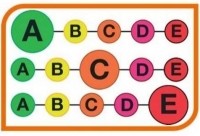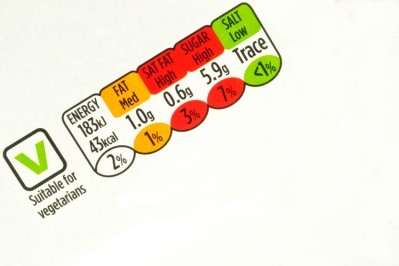European Parliament votes to scrap nutrient profiles

With 402 votes for and 285 against, MEPs backed proposals to scrap the concept of nutrient profiles due to “the serious and persistent problems” involved in implementation as well as possible market distortion.
The article voted on came as part of the Regulatory Fitness and Performance Programme (REFIT), which seeks to cut red tape and rationalise EU regulatory framework.
Recital 47 said nutrient profiling - the science of ranking foods according to nutritional composition and healthiness – was not necessary since under the EU Food Information for Consumers (FIC) Regulation consumers are already given "true" information on the fat, sugar, salt (FSS) content of foods.
'A lost opportunity'
Global food giant Nestlé told FoodNavigator it continued to back the principle of nutrient profiles, despite the result.
"We encourage the Commission to continue with the implementation of the current nutrition and health claims regulation, including nutrient profiles. An EU level playing field will support industry to invest in innovation on nutrition, leading to overall greater consumer wellbeing.
"We now look forward to the European Commission’s REFIT evaluation of the nutrition and health claims regulation (NHCR) and we will continue to engage proactively on this topic."
Ilaria Passarani, head of food and health at European consumer rights group BEUC, said the vote allows unhealthy food to continue bearing healthy messages. "We deeply regret the EU Parliament chose to stand by the food industry and let down consumers.”
Nutrient profiles beyond the vote
The broad premise of nutrient profiles is to ensure health claims are only made on healthy foods fitting a set FSS profile.
The concept was written into the 2006 NHCR but was never formalised as debate raged about how to set FSS thresholds and whether foods like cheese (high in fat) and juice (high in fructose) should be exempt and retain claim-making potential.
Other types of nutrient profile models (unrelated to today) are used or under consideration by governments to help consumers make healthier choices by signalling products that are high in salt, fat or sugar or high in vitamins, minerals, proteins, fibres and other nutrients. Examples include a 5-colour example (left) being considered in France or a 3-colour traffic light symbol that has been trialled in the UK.
With one third of European children either overweight or obese, Passarani called nutrient profiles indispensable and said it was unacceptable that Parliament was voting on their existence at all.
Director of the European Heart Network, Susanne Løgstrup, called the vote "a lost opportunity for the European Parliament to stand by an agreed policy and a blow to the Dutch EU Presidency which prioritises EU-wide improvement of food products".
Løgstrup said nutrient profiles would go a long way towards reducing marketing of unhealthy foods and effectively addressing the EU’s obesity crisis.
“Let’s hope that the outcome of today’s vote will not distract the European Commission even further,” she added.
Down with healthy messages on unhealthy food! @Europarl_EN must safeguard #nutrientprofiles. #Eplenary vote today pic.twitter.com/47JOj6pEmp
— The Consumer Voice (@beuc) April 12, 2016
Not everyone shared this openly pro-profile stance.
Trade association FoodDrinkEurope (FDE) is of the attitude that there is no such thing as an unhealthy food, only unhealthy diets and so welcomed the abolition.
Caobisco, the group which represents the interests of European chocolate, biscuit and confectionery manufacturers said it had "no position to share" on the subject of nutrient profiles.
Levelling the playing field
Yet Nestlé said it would like to see a nutrient profile system based on food categories, rather than one applied across the board, and portion size product information instead of per 100 g “as far as possible”.
Thresholds should be achievable and should take into account the technological, legal and 'organoleptic' limitations of reformulation, the spokesperson said.
But if this were put in place it could see some of Nestlé’s own products in their current form exposed by FSS thresholds.
Last week campaign group FoodWatch published a survey denouncing the fact that 80% of over 600 products surveyed in Germany and the Netherlands claiming to be healthy were high in SSF and did not meet World Health Organisation (WHO) nutrient profiles.
Nestlé’s chocolate-flavoured milk powder product Nesquik featured in the list.
Other institutions and groups have developed nutrient profiles to crack down on marketing unhealthy foods to children, rather than preventing unhealthy foods from bearing health claims. The WHO published its own nutrient profiles in February last year in reference to marketing to children.
A different set of nutrient profiles are also used by companies that have signed the EU Pledge, a voluntary initiative to change the way food and drink firms advertise to children, although a separate survey by FoodWatch revealed 90% of products it analysed failed to meet the nutritional standards the EU Pledge-companies agreed to.
Nutrient profiles according to the NHCR
EU lawmakers had this in mind for nutrient profiles when the NHCR was written into law 10 years ago:
"The application of nutrient profiles as a criterion would aim to avoid a situation where nutrition or health claims mask the overall nutritional status of a food product, which could mislead consumers when trying to make healthy choices in the context of a balanced diet."

"The establishment of nutrient profiles should take into account the content of different nutrients and substances with a nutritional or physiological effect, in particular those such as fat, saturated fat, trans-fatty acids, salt/sodium and sugars, excessive intakes of which in the overall diet are not recommended, as well as poly- and mono-unsaturated fats, available carbohydrates other than sugars, vitamins, minerals, protein and fibre."
"When setting the nutrient profiles, the different categories of foods and the place and role of these foods in the overall diet should be taken into account. Exemptions from the requirement to respect established nutrient profiles may be necessary for certain foods or categories of foods depending on their role and importance in the diet of the population."















